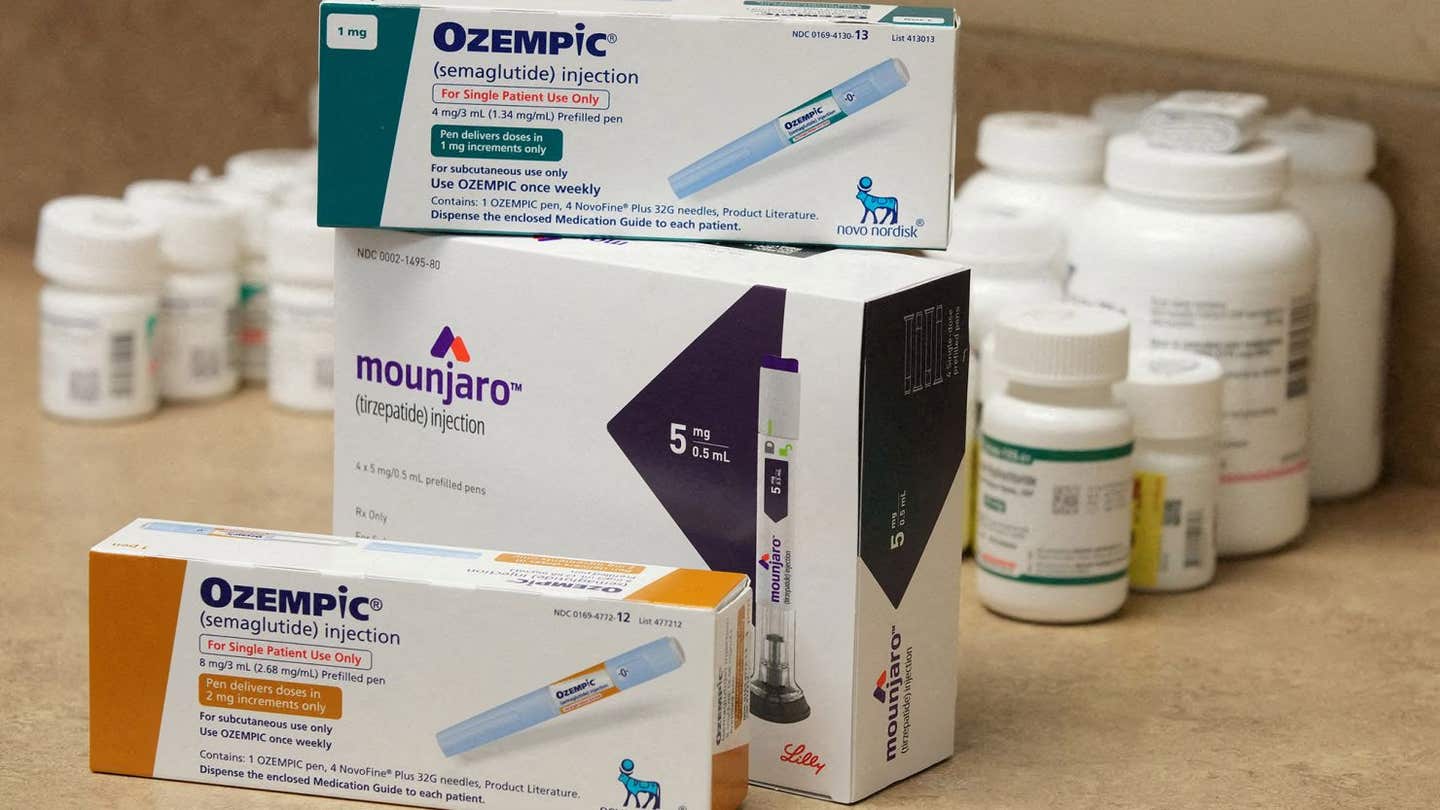20 year study unlocks the secret to rejuvenating human skin and organs
Human skin repairs itself slowly, via the formation of contractile scars which may cause dysfunction.

[Nov 3, 2022: JD Shavit, The Brighter Side of News]
Researchers found that microbial fermentation of dietary fibre in the gut can protect against allergic skin disease. (CREDIT: Getty Images)
Wound healing is a major problem for many older individuals. Furthermore, chronic, non-healing skin ulcers are a major source of health care costs and patient morbidity and mortality.
Human skin repairs itself slowly, via the formation of contractile scars which may cause dysfunction. In contrast, the axolotl salamander can readily regrow a severed limb, the spiny mouse has densely haired skin that heals with remarkable speed, and the skin of the growing human embryo can regenerate after trauma without the need for any scar formation. By studying these examples, scientists are finding clues for how to enhance skin healing through a more regenerative response.
After two decades of research, scientists at Haifa’s Rambam Health Care Campus and the Technion-Israel Institute of Technology have found a way of rejuvenating human skin and organs. The successful study was conducted on laboratory mice and has just been published in the journal Science Advances, issued by the American Association for the Advancement of Science.
The study authors used a graft of aged human skin on young mice and proved that it is possible to make skin and other organs young again by changing the molecular structure through all the layers of skin.
Related Stories:
The scientists from the Monasterium Laboratory in Germany, and the University of Manchester titled their study, “Human Organ Rejuvenation by VEGF-A: Lessons From the Skin.”
Scientists transplanted aging human skin onto young mice with severe combined immunodeficiency disease (SCID) that affects both B and T lymphocytes. This can rejuvenate the transplantation of living cells, tissue, or organs from one species to another, said the scientists.
This process is accompanied by the growth of new blood vessels, repigmentation of the outer layer of the skin called the epidermis, and significant improvement in the biomarkers of aging, says the Post.
Before transplantation: Rete-ridge structures were clearly observed in sections of human young skin, whereas old skin is characterized by a marked flattening of the dermoepidermal junction. Increased number of blood vessels and organized collagen in the dermis of the young skin in contrast to the aged one. After transplantation: Increased epidermal thickness. (CREDIT: Human organ rejuvenation by VEGF-A: Lessons from the skin paper)
The scientists noted that instead of viewing aging as a fatal disease, changing the view of aging as a “druggable and reprogrammable target, dissecting the key drivers of human organ aging and developing effective molecular strategies to prevent or even reverse it surely constitutes one of the most fundamental missions of biomedical research.”
Human skin is an ideal preclinical research model to investigate antiaging methods as it is the first organ of the human body to visibly reflect changes in aging, such as changes in skin tone and graying of the hair.
“While massive industry efforts therefore cater to the ancient human desire to halt or reverse the phenotype of aging skin,” the authors wrote, “success at this frontier has remained moderate at best, and many product claims of in-vivo (animal models) rejuvenation of human skin are typically unsubstantiated.”
Summary of the proposed rejuvenation cascade of aged human skin after transplantation to young mice (OiY). High-level mouse VEGF-A may initiate this cascade by stimulating human VEGFRs in the xenotransplant, leading to a positive feedback loop that enhances the secretion of human VEGF-A within in the xenotransplant and triggers the indicated cascade of proangiogenic and skin rejuvenation signaling events. (CREDIT: Science Advances)
The promising study found that not only was the outer layer of human skin rejuvenated when grafted on the SCID mice, but also all layers of skin could become young again. To determine this, they used vascular endothelial growth factor A (VEGF-A) to evaluate the process and in addition found that even the number of new blood vessels in the transplanted skin increased.
Don't have time for intensive skin care? You can still pamper yourself by acing the basics. Good skin care and healthy lifestyle choices can help delay natural aging and prevent various skin problems. Get started with these five no-nonsense tips.
1. Protect yourself from the sun
One of the most important ways to take care of your skin is to protect it from the sun. A lifetime of sun exposure can cause wrinkles, age spots and other skin problems — as well as increase the risk of skin cancer.
For the most complete sun protection:
Use sunscreen. Use a broad-spectrum sunscreen with an SPF of at least 15. Apply sunscreen generously, and reapply every two hours — or more often if you're swimming or perspiring.
Seek shade. Avoid the sun between 10 a.m. and 4 p.m., when the sun's rays are strongest.
Wear protective clothing. Cover your skin with tightly woven long-sleeved shirts, long pants and wide-brimmed hats. Also consider laundry additives, which give clothing an additional layer of ultraviolet protection for a certain number of washings, or special sun-protective clothing — which is specifically designed to block ultraviolet rays.
2. Don't smoke
Smoking makes your skin look older and contributes to wrinkles. Smoking narrows the tiny blood vessels in the outermost layers of skin, which decreases blood flow and makes skin paler. This also depletes the skin of oxygen and nutrients that are important to skin health.
Smoking also damages collagen and elastin — the fibers that give your skin strength and elasticity. In addition, the repetitive facial expressions you make when smoking — such as pursing your lips when inhaling and squinting your eyes to keep out smoke — can contribute to wrinkles.
In addition, smoking increases your risk of squamous cell skin cancer. If you smoke, the best way to protect your skin is to quit. Ask your doctor for tips or treatments to help you stop smoking.
3. Treat your skin gently
Daily cleansing and shaving can take a toll on your skin. To keep it gentle:
Limit bath time. Hot water and long showers or baths remove oils from your skin. Limit your bath or shower time, and use warm — rather than hot — water.
Avoid strong soaps. Strong soaps and detergents can strip oil from your skin. Instead, choose mild cleansers.
Shave carefully. To protect and lubricate your skin, apply shaving cream, lotion or gel before shaving. For the closest shave, use a clean, sharp razor. Shave in the direction the hair grows, not against it.
Pat dry. After washing or bathing, gently pat or blot your skin dry with a towel so that some moisture remains on your skin.
Moisturize dry skin. If your skin is dry, use a moisturizer that fits your skin type. For daily use, consider a moisturizer that contains SPF.
4. Eat a healthy diet
A healthy diet can help you look and feel your best. Eat plenty of fruits, vegetables, whole grains and lean proteins. The association between diet and acne isn't clear — but some research suggests that a diet rich in fish oil or fish oil supplements and low in unhealthy fats and processed or refined carbohydrates might promote younger looking skin. Drinking plenty of water helps keep your skin hydrated.
5. Manage stress
Uncontrolled stress can make your skin more sensitive and trigger acne breakouts and other skin problems. To encourage healthy skin — and a healthy state of mind — take steps to manage your stress. Get enough sleep, set reasonable limits, scale back your to-do list and make time to do the things you enjoy. The results might be more dramatic than you expect.
For more science and technology stories check out our New Discoveries section at The Brighter Side of News.
Note: Materials provided above by The Brighter Side of News. Content may be edited for style and length.
Like these kind of feel good stories? Get the Brighter Side of News' newsletter.
Joseph Shavit
Head Science News Writer | Communicating Innovation & Discovery
Based in Los Angeles, Joseph Shavit is an accomplished science journalist, head science news writer and co-founder at The Brighter Side of News, where he translates cutting-edge discoveries into compelling stories for a broad audience. With a strong background spanning science, business, product management, media leadership, and entrepreneurship, Joseph brings a unique perspective to science communication. His expertise allows him to uncover the intersection of technological advancements and market potential, shedding light on how groundbreaking research evolves into transformative products and industries.



